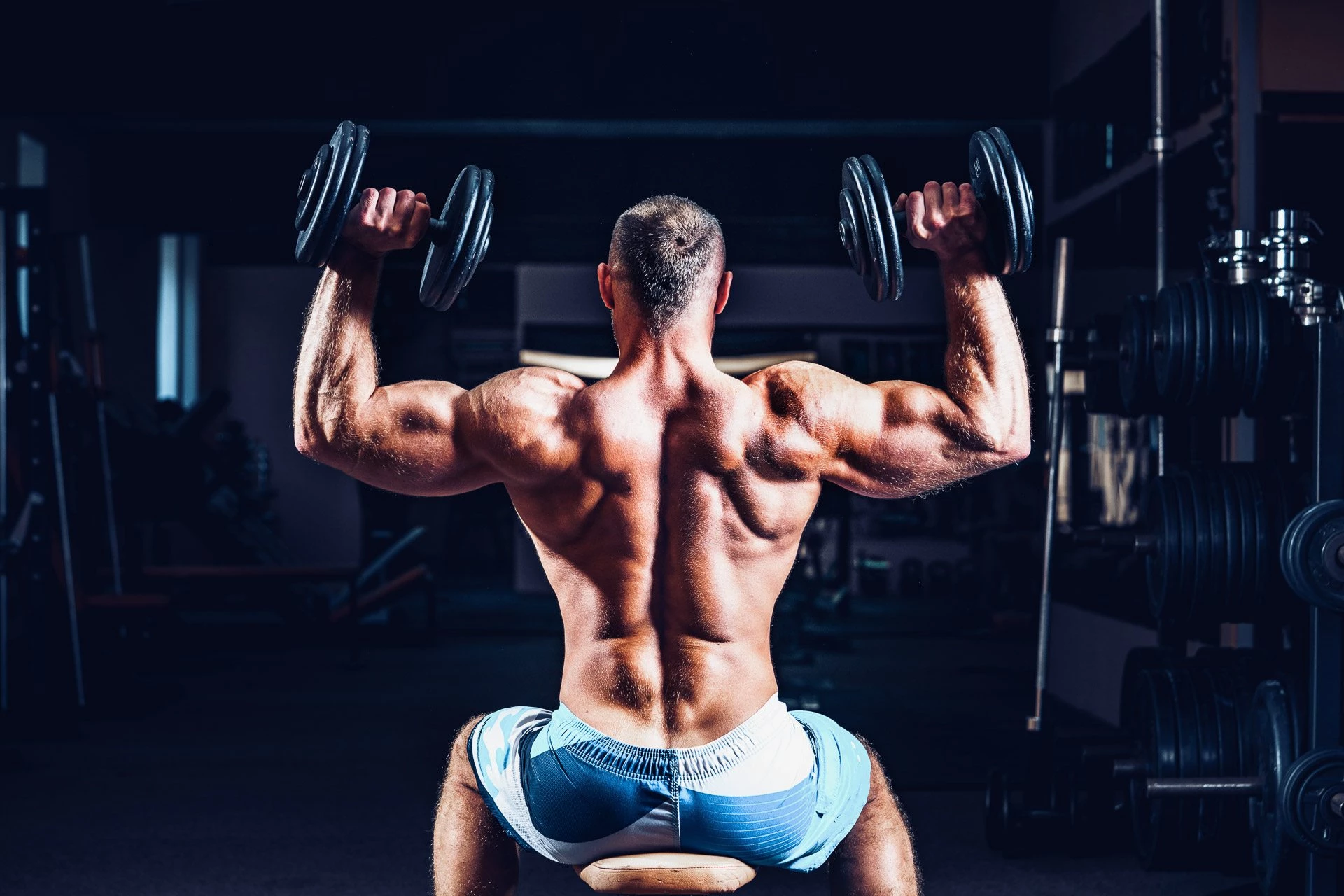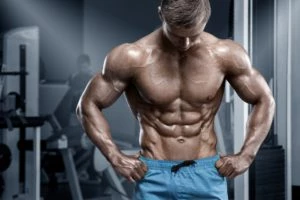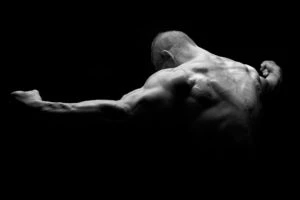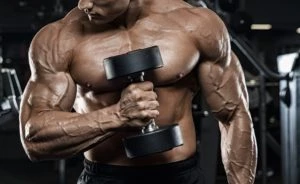Muscle overtraining

Quite often, athletes fall into a state of overtraining, which corresponds to such symptoms and signs as a decrease in strength and muscle mass, loss of muscle relief, frequent colds, headaches, insomnia and much more, and conversations about personal records in sports go on, about how to generally maintain the achieved result. Therefore, it is important for all athletes to know how to treat, and most importantly, how to prevent muscle overtraining.
Often young athletes (beginners) neglect elementary recommendations on the training process and nutrition, which is why this category of athletes is in the zone of increased risk of overtraining the body.
If you are a beginner athlete, we strongly recommend that you familiarize yourself with the information below, and it will also be useful for an experienced athlete to know what to change in his life so that training will always be energetic, effective and safe.

Overtraining in bodybuilding
To know how to deal with overtraining in bodybuilding, and indeed in any sport, you need to decide, first of all, what it is, how it affects the body, because of which it arises, why some can train and progress for a very long time and others not.
Overtraining is a person’s state characterized by mental depression, physical performance, a decrease in interest in the training process, stopping and lowering personal sports results.
Very often, overtraining catches up with young athletes, beginners, whose enthusiasm for exercising with iron goes wild, they do not want to believe that there is a limit of human strength, they perform everything at once, all exercises in one day, according to the principle, the more the better.
Another moment, when a more advanced athlete performs everything correctly, all the exercises on the technique, without missing a single workout, eating well, and resting, but at the same time he also has a stop of sports results, most often, the reason is all the same overtraining.
The body does not have time to recover after receiving stress!
Sometimes this happens, the training program works, the result grows, strength and muscle mass respond perfectly, however, at some point, a stupor occurs, a stop in muscle growth, and strength indicators roll back. The reason lies, all in the same overtraining, when you had a sharp jump in strength indicators and an increase in muscle mass, then you had to throw back the working weights, since the body had not yet completely reorganized to work with heavier weights, and you “caught »Overtraining. That is, the training program, in this case, suited you, but you hurried, and did not take a step back, to take again two steps forward.
The human body is unique, it can show tremendous strength, endurance, respond to power load, a huge increase in muscle mass, but only in the case when you give it all the favorable conditions for development. This is the key to understanding overcoming overtraining, to a constant increase in strength, muscle mass and endurance.
However, the body's capabilities are limited, therefore, even advanced athletes reach their limit, which arises not against the background of overtraining, but against the background of muscle adaptation to loads, as a result of achieving a training plateau at which all progress of physical indicators stops. But we will talk about this in other articles.

Training periodization
Another very important thing that affects an athlete's overtraining is cyclic loading or periodization.
We can’t constantly train with heavy weights, the body’s regenerative capabilities are limited, therefore it is necessary to include in your strength program both light and heavy workouts, which will guarantee the restoration of strength and energy.
The same rule applies to aerobic sports (running, skiing, swimming, and so on), where it is also necessary to observe the cyclic rule, for example, alternating heavy running days on the pulse of 150-170, with light 110-130 beats per minute.
Combining bodybuilding with other sports
Many people try to combine bodybuilding with another sport. As a rule, these are various martial arts, completely not realizing that this is a completely different type of load. Therefore, it will be impossible show good results there and there.
Work with iron is anaerobic, work with your own weight, at a high pulse, constantly moving, moving - aerobic. It turns out that the bodybuilder, whose endurance wants to leave the best, will try to run at a frantic pulse. Or fight, which in the end will lead not only to a violation of cardiac activity, but also to an inevitable decrease in muscle mass and strength.

If you chose bodybuilding, then do it only, you can, of course, run, do aerobic exercise, but only for your own pleasure.
If you want to have functional muscles, that is, strong, bumpy and hardy, then you can’t just not. You need to combine aerobic exercise with anaerobic exercise. But unfortunately the muscle volume in this case will be an order of magnitude lower than if you were only doing one bodybuilding.
And now, we’ll structure everything that has been said above about overtraining and indicate specific causes, symptoms, and treatment.
Common causes of overtraining. The most common causes that cause overtraining in an athlete
External circumstances
As you know, sports, bodybuilding, it is not only a huge physical work, but also the same internal. Therefore, our performance directly depends on the psychological situation within us.
Problems in the family, at work, constant quarrels, scandals, grief, lack of money, lead us to constant stress, at the level of brain activity. Because of this we feel overwhelmed, depressed, the nervous system is exhausted. And ultimately we feel lack of forces to conduct a full-fledged training. And over time, chronic fatigue will inevitably lead to overtraining.
Inappropriate exercise technique
A well-designed training program, a balanced diet, and a full recovery. There are not a guarantee that you will achieve high results in bodybuilding.

Lack of understanding of the correct technique for performing exercises, especially basic (multi-joint) exercises in the gym, entails:
- injuries
- bruises
- sprains
- various pains in the ligaments, joints and spine, which can then turn into chronic ones further.
As well as to slow down the process of gaining muscle mass and strength due to violation of the amplitude of movement, working angles in exercises. If the second version of the development of the event is not so terrible for the athlete, then the first (injuries) can not only lead to overtraining (and it will be guaranteed in this case), but also in principle to the end of a sports career (for example, as a result of the complete separation of the pectoralis major muscle or intervertebral hernia).
Frivolous approach
A frivolous approach borders directly on the laziness and irresponsibility of a person to his training process.
Skipping meals, poor sleep, trash during training, lack of warm-up, bad habits, all this directly affects the general physical condition of the athlete. Which in this case will undergo gradual destruction.
As a rule, adolescent bodybuilders, as well as, in principle, beginner athletes, are tempted by such a “decayed” sporting lifestyle. That it ultimately does not lead to anything like overtraining.
Muscle strain
Choosing the right training program, you will only do half the job for the success of a beautiful, sculpted body, the rest will be envy, on how you will recover after the training. The court enters, your nutrition, sleep, pharmacology, rest, how physically intense your work, whether you combine bodybuilding with another sport.
If you are not fully recovering, wasting your physical strength at work, other sports, eating poorly, fast fatigue arises, which negatively affects athletic performance.
Another option, when the body's regenerative capabilities are not pulled, the training program. As a result, the muscles will receive excessive strain. As a result of the processes of catabolism (destruction), will begin to surpass the processes of anabolism (growth).
The main task of the athlete, of any level of training, is not to fall into overtraining, to determine the symptoms of its development at the initial stage and to respond to them in time.

Below are the distinguishing features that signal a person that his body is most likely to reach its limits:
- Stopping the growth of strength indicators and muscle mass
- Fatigue, loss of mass and muscle relief
- Chronic body fatigue
- Lack of desire to train, loss of motivation
- The development of unwarranted aggression, excessive irritability and depression
- Constant aching pain in muscles, ligaments, joints
- Decreased immunity
- Lack of appetite and libido
- Headaches, sleep disturbance
- Disruption of the cardiovascular system, menstrual cycle
Many, even experienced athletes, cannot timely respond to symptoms of overtraining. As a result, it develops into a chronic one, as a result of which the athlete’s career is compromised.
The chronic form of overtraining, one of the most dangerous. And requires the immediate adoption of decisive actions aimed primarily at the speedy elimination of the factors that caused it.

Overtraining treatment
First aid, which is aimed at treating an athlete's overtraining:
- Give the body a few extra days of rest between workouts (2-3 days).
- Change the training program to a lighter (simpler) one, or reduce working weights in exercises by 30-40%. That is, if your bench press lying on a horizontal bench, for example, was 100 kg in 4 sets for 8 reps. Then with taking into account the reduction in load, it will be 60-70 kg.
Often, for athletes, these two simple tips are enough to restore strength. However, in order to comprehensively solve the problem of overtraining, it is necessary to connect a full arsenal of recovery measures that can and should be used by any athlete as much as possible:
- Increase the additional break in training from 2-3 days to 1-2 weeks
- Reduced training load, work with very light weights (50% lower!)
- Increased sleep duration (up to 10 hours)
- Improving the quality of nutrition, the consumption of adaptogens, sports nutrition, vitamin and mineral complexes
- Regular muscle massage
- Avoiding work related to overly nervous and energy intensive activities
Muscle growth is directly dependent on the nervous system. It cannot be overstrained, by large volumes of training, heavy weights and daily stresses.
Overtraining treatment will be considered completed if you again have motivation, a desire to train, progress. In practice, overtraining is considered cured when you again began to progress in strength and mass.

Prevention of overtraining
Often, one popular problem that leads to overtraining is an incorrectly selected training plan. Therefore, as a preventative measure, we recommend that you listen to the tips:
- Do not engage in the same training program for a long time, the muscles adapt to stress and stop responding to the load.
- Basic exercises should always be present in the training program. But try to combine additional times every 2-3 months, change among themselves. For example, if you did a barbell press on the top of the pectoral muscles at an angle, then next time do a dumbbell press at an angle.
- Combine a light load with a heavy one. So that the body can completely give everything out, on the one hand, and accumulate strength on the other hand.
And of course, we will give a standard set of rules, which is the prevention of overtraining of an athlete:
- Try to diversify your diet so that the body receives and assimilates all the nutrients.
- Adhere to the principles of a healthy diet, it will provide the body with beneficial micro and macro elements.
- Wake up not by the alarm clock, but by your biological clock. Go to bed and get up at the same time, but do not go to bed later than 00-00.
- Avoid stress and conflict situations, but do not let yourself be offended!
Conclusions
Think hard - do not confuse overtraining with ordinary laziness, which is present in every person.
Learn to listen to your body and understand it when you need to make an extra day of rest. When you need to additionally increase training stress in order to simultaneously give the muscles an adequate load.